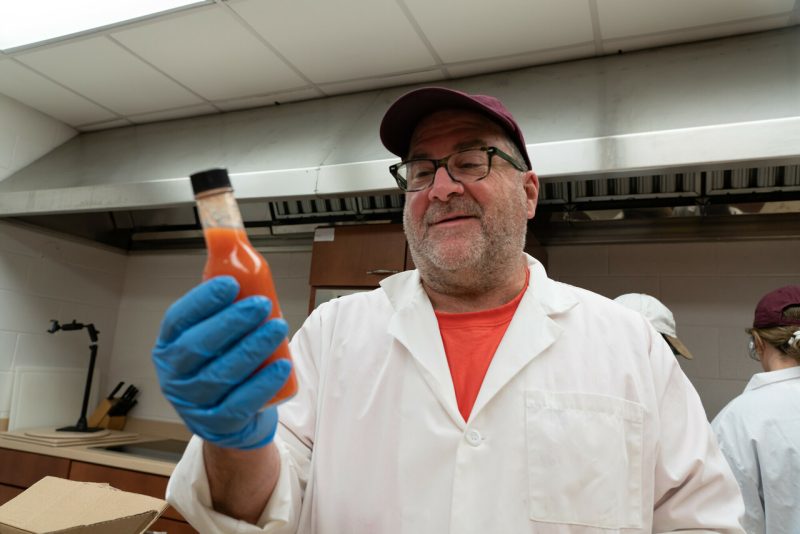
The first bite of the chicken wing dripping with hot sauce doesn’t feel so bad.
Flavorful, but has a bit of a kick. You take another. And then another. That sweet heat has now turned into a roar, complete with a tingling face and sweat streaked forehead.
What makes hot sauces do this?
Sean O’Keefe, a professor in Virginia Tech’s College of Agriculture and Life Sciences’ Department of Food Science and Technology, says it’s the levels of capsaicin, a colorless and odorless compound, found in peppers.
“When I get the right amount, I’m sweating and turning red. It’s just the physiological response,” O’Keefe said. “What the capsaicin does is bind to nerve receptors in the body and gives a sensation of burning.”
This Super Bowl, as millions of Americans eat as many as 1.40 billion wings, O’Keefe is shedding light as to what makes hot sauce bring the heat.
Extended exposure to capsaicin could make it more tolerable to the human body, O’Keefe says.
“There’s definitely a habituation effect where if people eat hot sauce all the time, they get used to it so it doesn’t bother you quite as much. I likely burned out my receptors long ago,” O’Keefe said. “But being hot for the sake of hot isn’t fun. Heat needs to have flavor.”
When making your own flavorful hot sauce as O’Keefe has done for years, there are a few considerations:
Wear gloves when handling the peppers.
Keep good records of hot sauces made as recipes can be continuously tinkered.
At group events, not everyone likes spicy food. Have hot and not-so-hot versions to appease the appetites of both crowds or have a classic barbeque or teriyaki sauce on-hand.
Factor in your personal heat tolerance.
Here’s a recipe to make your own special sweet heat wing sauce at home:
Two pineapples
Four mangos
Two 12 oz packs raspberries
Five 4 oz packages habanero peppers
Juice of five limes, two oranges, two lemons
Two cups cider vinegar
16 fl oz of maple syrup
Five grams xanthan gum to keep solids in suspension
Grind the solids with the liquids in a blender until smooth. Heat to boiling and boil for 5 minutes.
Toss the hot sauce over the wings and enjoy.
For a truly homemade hot sauce, try growing your own peppers, O’Keefe says.
“You can grow peppers that are otherwise hard to find in stores and experiment with how changing a pepper impacts your homemade sauce,” O’Keefe said. “Some peppers grow well indoors by a window, others do well outdoors.”
Whether your pepper of choice is ghost, Carolina Reaper, Scorpion, or the mild sriracha, craft your own hot sauce that burns so good.
Max Esterhuizen
Virginia Tech

